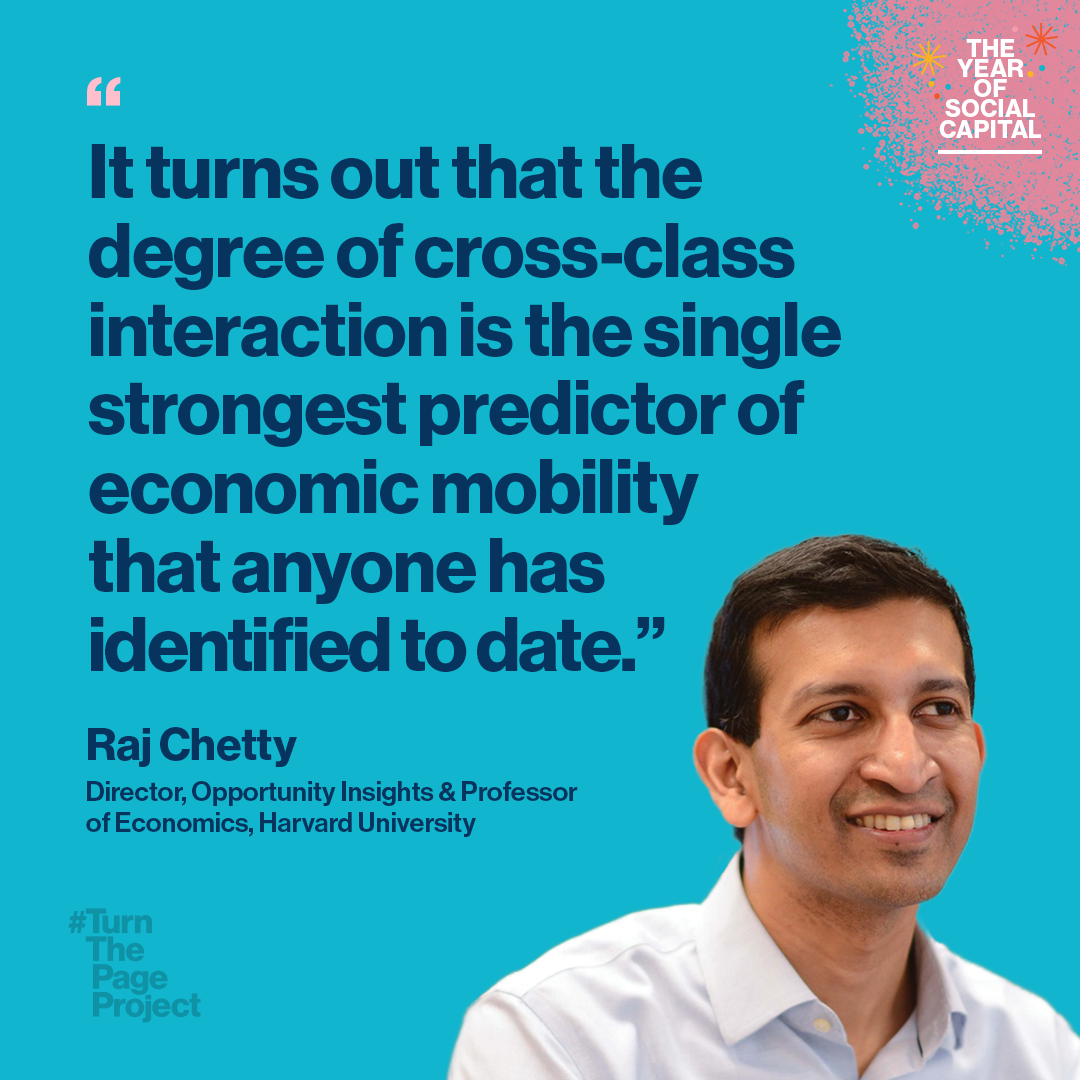Year of Social Capital


THE AMERICAN DREAM is fading in the sense that in the middle of the last century if you were a kid growing up in America, you could virtually count on having a higher standard of living than your parents did. We estimate that for kids born in the 1940s, 92 percent went on to earn more than their parents did. But if we look at kids today, it’s become a 50/50 shot, a coin flip, as to whether you’re going to do better than your parents.
One factor stands out in terms of predicting differences in economic mobility, and that’s social capital.”
What is it that’s leading some kids to do really well and other kids to be trapped in poverty? Things like the quality of local schools, the degree of segregation, and levels of inequality. But it turns out one factor stands out in terms of predicting these differences in economic mobility, and that’s social capital. Our most recent work measures the degree of social interaction between people from different class backgrounds. To put it in simple terms, we use data from Facebook to look at who people are friends with across the United States, and we measure the degree of cross-class interaction. As a low-income person, what fraction of your friends are high income? It turns out that this variable, the degree of cross-class interaction, is the single strongest predictor of economic mobility that anyone has identified to date.
Cross-class interaction may be critical for economic mobility because it shapes kids’ aspirations; it gives them information about things like applying for college. If your own parents haven’t gone to college, but you have many friends whose parents have, that may change your outlook on life. It may also directly give you access to internships and jobs that you otherwise wouldn’t have had. I view that as a key area for focus in research and policy on economic mobility going forward—to think about how we create more economic connectedness and cross-class interaction.

Education is clearly a critical pathway to achieving the American dream. At present despite the many efforts that have been made to expand access to college, there are enormous divides in the US in terms of college attendance rates. Kids from the lowest-income families in the US have only a one in five chance of attending any college, whereas virtually all kids from the highest-income families will end up attending college.
But the types of colleges that kids attend vary vastly across the income distribution. In particular, a lot of our nation’s best colleges—selective private colleges like Harvard, Princeton, Yale and elite flagship institutions like UC Berkeley and the University of Michigan—provide great outcomes for kids. Yet most of those colleges have predominantly students who come from affluent backgrounds.
Kids from low-income families tend to attend two-year colleges, community colleges, local colleges—some of which are very good, but many of which unfortunately don’t have great outcomes. If we look at how much kids are earning after they attend such colleges, it’s not all that much better than simply getting a high school degree. What we really need is colleges that both admit a lot of low-income kids and provide that escalator to upward mobility to the middle class and beyond.